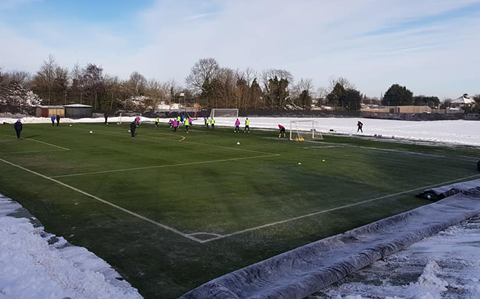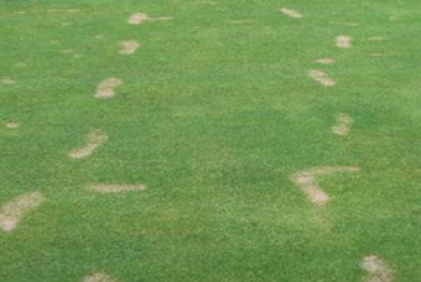Dealing with Snow and Ice (Frost)
Where to start
An important note to start on is that snow and ice (frost) on turf are not harmful to the grass plant and can be left to melt providing there is not an immediate need to clear snow in order to facilitate play. There are however some points to consider.
Some points to considerBefore deciding on the appropriate action when dealing with frost, it’s important to consider the following points:
- If the ground underneath is frozen, falling snow will insulate it slowing down the time taken for the ground to thaw but reducing the risk of disease
- If the ground was soft at the time of snow fall, indicating high soil temperatures, there may be some disease activity in the form of snow mould if a covering of snow stays for several days or more
- Frozen ground is susceptible to water logging so don’t expect a surface to be playable simply because the snow has melted - you may find that it is saturated and not fit for play
- If air temperatures are adequate, leaf frosts will often clear on unshaded areas by mid-morning, but early kick offs and evening games will be more difficult to accommodate without significant damage to the turf and risk to player safety
- Avoid any foot traffic or taking machinery on turf when there is a leaf frost. Doing so will bruise the grass, leaving anything from black footprints to blackened damaged areas depending on the extent of the traffic. Turf will not recover until growth resumes in the spring.
- In a situation where a leaf frost has cleared but a ground frost remains, either the surface will be too hard and unsafe for play or the top inch may have softened adequately to take a stud, but the remaining soil profile may remain frozen. In this situation the grass plant may be sheared from its roots if turf is disturbed through play - use a suitable implement to ensure the soil has thawed throughout.
- Carry out checks to all areas of the pitch - worn or bare areas will be particularly at risk of freezing as grass coverage provides a degree of insulation. Bare goal mouths will be particularly susceptible to ground frost.
- Avoid aeration or deep spiking when ground frost is forecasted or when air temperatures drop - the holes or slits introduced will make the soil more susceptible to freezing and cold air hitting the roots can cause turf stress too.
- All fertiliser applications both granular and liquid should be avoided when frost is expected.
- Never use salt, hot water or other snow-melt products on or near turf as they will burn the turf and most likely kill it – salt-based snow-melt products are extremely corrosive to metal so avoid applying them using spreaders that may be shared for pitch fertilisation.
- Frost protection sheeting can be used to insulate vulnerable areas, of course in a professional setting full pitch covers systems are commonplace or even undersoil heating and grow lights but at the grassroots end protecting your goal mouths with frost covers is a good place to start.
Snow clearance is extremely labour intensive and heavy snow falls are very difficult to deal with particularly at a grassroots level. However, some measures can be taken depending on your equipment and workforce.
- Light snow may be cleared by simple methods such as dragging heavy ropes over the surface in a similar way to removing dew. Heavy duty plastic snow shovels, drag brushes and mats can be used to good effect. Handheld air blowers are also an option. Larger mechanical equipment should be avoided where possible particularly if the ground is thawed below as it may damage the soil and churn up the turf, however frozen surfaces may also become heavily bruised as explained.
- Larger snow falls require significant workforce and time to remove and where the financial impact is limited whilst postponements or cancelations are never desirable this may be a more viable option. Sometimes there is no beating mother nature!
- It is often a good idea to mark a pitch in a different colour (sky blue or red are fairly typical) if snow is expected during a fixture.
- If you maintain an artificial surface please consult the manufacturers guidance on snow clearance, 3G pitch infills are easily displaced during snow removal and costly to replace or re-disperse.



 Tweet
Tweet